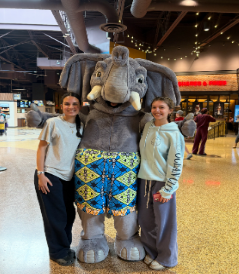You may find yourself wondering why people have different colored eyes, or why some people have six fingers on each hand. These are all based on genetics, the study of heredity.
People all have genes, little pieces of DNA that determine what you look like. These genes can be either dominant or recessive. These are called “alleles”. Dominant genes are represented by a capital letter (ex. brown eyes are dominant, so they are represented by a “B”). Recessive genes are represented by a lowercase letter (ex. blue eyes are recessive, so they are represented by a “b”). Dominant genes overpower recessive genes.
Scientists called “geneticists” use a tool called a Punnett Square to study genetics. These squares can be used to predict what the offspring of a generation will look like. For example, using the image attached to the article(Punnett square), we can see that the dominant allele are brown eyes and that the recessive allele is blue eyes. We can also see that the parents both have one brown allele and one blue allele, and if brown eyes are dominant, that means the parents both have brown eyes. We solve a Punnett square by matching the left side and the top side. We can then solve by doing B x B in the top left corner. This then becomes BB. We can do this for all of them.
Now we need to see what the offspring will look like, which is called the phenotype. If brown is dominant(meaning it overpowers the gene for blue eyes), we know that 75% of the offspring have brown eyes and that 25% of the offspring have blue eyes. Then, we need to see what the genotype is, the specific alleles. We do this by using some terms (heterozygous (He), homozygous (Ho), homozygous recessive (HoR), and homozygous dominant (HoD)). Heterozygous means that there are 2 different alleles, homozygous means that there are the same alleles, and homozygous recessive and dominant means the same recessive alleles or dominant alleles, respectively. Now we know that 50% of the offspring are homozygous, 50% of the offspring are heterozygous, 25% of the offspring are homozygous dominant and 25% of the offspring are homozygous recessive.
These are the “basics” of genetics. Now you can study genetics with ease!









